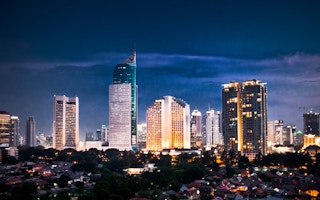Many cities in Asia and the Pacific face the challenge of how to adapt to the effects of climate change, that especially affect the urban poor, the most at risk when a disaster strikes, heavy rains arrive—or fail to—and as sea levels and temperatures rise.
Urban climate change resilience (UCCR) is the degree to which cities can function despite these short- and long-term risks. UCCR principles consider cities as dynamic systems capable of evolving and adapting to survive, and even thrive in the face of climate stresses or unexpected shocks.
For cities to achieve resilience, ADB’s Urban Climate Change Resilience manual notes they must address urban systems, climate change, and vulnerable groups in a holistic approach.

The figure also highlights how no single action can make a city resilient to climate change: resilience can only be achieved through multiple interventions, each building upon each other over time and as lessons learned from past experiences are applied.
UCCR planning efforts must be informed by 3 different but correlated types of analysis:
1. Urban. Understanding how a city works, as well as examining its current status and future trends—such as population growth and economic development—is crucial. Since a city’s degree of resilience to climate change is determined and influenced by how it reacted to climate-related stresses and shocks in the past, the first aspect of any urban analysis is to assess precisely that, before focusing on which shocks are more likely to happen again. Here, so-called “systems thinking” is a holistic approach in which urban areas are considered as complex “living systems” undergoing numerous dynamic exchanges. Spatial analysis looks at urban population development, land-use, location of different urban functions, and essential urban infrastructure (energy, water, transport) located or originating inside or even outside of the city.
2. Climate change risk. Projections of direct and indirect climate impacts begin with an assessment of likelihood of future hazards based on factors like temperature, rainfall, or frequency of storms, and how these will impact cities. Uncertainty, though, is increasing as the speed of climate change processes increases and that makes it harder to support design specifications for dams, dikes, or flood control channels, to name a few. Planners and engineers are thus required to find alternative design approaches that are less dependent on specifics and allow for more uncertainty in their models. In addition, city planners can engage urban stakeholders for city-level verification that inputs are representative and reliable, and outputs (future hazard profiles) are realistic, according to local knowledge and experience.
3. Vulnerability. In many of Asia’s cities, a sizable chunk of the urban poor face high exposure to climate change impacts. To increase their coping capacity, we must identify their location and dynamics to better understand them, and then plan how to mitigate the direct effects of climate change, as well as indirect factors like access to energy, food, and water. Insufficient capacity to deal with the effects may be due to lack of education, limited access to basic infrastructure, financial or employment constraints, and political systems that don’t provide safety nets for the underprivileged.
Alexandra Vogl is urban development specialist, regional and sustainable development department, Asian Development Bank. This post was republished from the ADB Blog.











